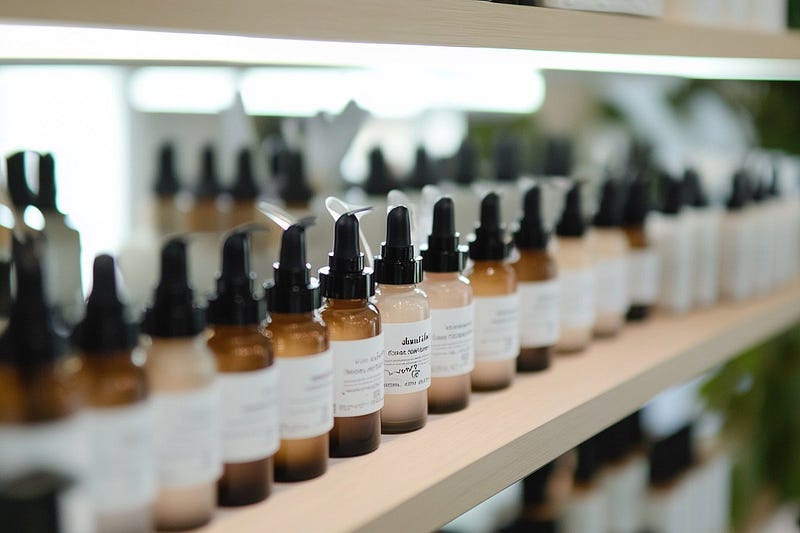The Key Elements of Compelling Product Descriptions
Learn the essential parts of ecommerce product descriptions — headlines, what to emphasize, and how to create trust and convince readers.
Writing a product description that grabs attention and boosts sales can be trickier than it seems — especially when you’re the one who created the product.
I once worked with a maker of stunning aloha shirts crafted from old kimono fabric. He didn’t have much to say about them beyond the basic specs, believing their beauty and quality spoke for themselves. While that might work in a physical store, online shoppers often need more than just a few photos and bullet points.
These shirts weren’t just pretty clothing items — they were unique, handcrafted works of art with histories spanning generations. I distilled their rich backstory, the same one that fueled his team’s passion, and used it to craft compelling product descriptions. The result was immediate. The shirts went from being seen as mere commodities to becoming the foundation of a movement. He never looked back.
You can learn to do the same. Let’s dive into the key elements of an irresistible product description so you can apply them to your ecommerce store.
Attention-Grabbing Headlines
“On the average, five times as many people read the headline as read the body copy. When you have written your headline, you have spent eighty cents out of your dollar.” — David Ogilvy
Your product page headline is the first thing potential customers see, and it can make or break their decision to keep reading. A great headline should be clear, concise, and compelling, instantly conveying the main benefit of your product and encouraging further interest.
Use Words That Evoke Emotion and Urgency
For Example:
Before: “High-Performance Running Shoes”
After: “Elevate Your Run — Secure Your High-Performance Shoes Before They’re Gone!”
Breakdown:
“Elevate Your Run” appeals to the reader’s desire for improvement and peak performance, tapping into their aspirations.
“Secure Your” suggests that the product is valuable and potentially limited, prompting the reader to take action quickly.
“Before They’re Gone” adds urgency by implying scarcity, encouraging the reader to act immediately to avoid missing out.
Of course, people are wary of hype, so adjust your tone and wording to sound sincere and believable. When your language aligns with the reader’s mindset, it should feel so natural that they switch from being on the defensive to looking for reasons to justify making the purchase.
Incorporate Numbers for Credibility
For Example:
Before: “Advanced Skincare Serum for Radiant Skin”
After: “Achieve 3x Brighter Skin — Trusted by 95% of Women Who Saw Results in Just 7 Days!”
Breakdown:
“3x Brighter Skin” quantifies the benefit, making it more tangible and compelling for the reader.
“Trusted by 95% of Women” adds social proof, showing that most users trust and have had success with the product.
“Results in Just 7 Days” sets an expectation for quick results, motivating the reader to try the product.
Remember, whenever you quantify benefits, you must provide footnotes with reference sources so that the reader can verify your claims.
Showcase Your Product’s Strengths
The competition for your customer’s attention is fiercer daily as more sellers come online. Your description must convey what makes your product unique and why customers should pick it over others.
Is it crafted from sustainable, high-quality materials? Does it offer advanced functionality or a cutting-edge design? Is it supported by outstanding customer service or a generous warranty? Be sure to highlight these advantages in your description.
Emphasize Benefits Over Features
While it’s essential to mention your product’s features, it’s crucial to highlight the benefits those features offer. Features are details like size, weight, or material. Benefits show how those features enhance the customer’s life or solve their problems.
Here’s an example of how this technique could be applied to a product description for a bamboo tumbler:
“Keep your drinks at the perfect temperature for hours with our Eco-Friendly Bamboo Tumbler. Its double-wall insulation ensures your coffee stays piping hot during your morning commute, while the leak-proof lid means you can toss it in your bag without worrying about spills. Plus, by choosing bamboo, you’re making a sustainable choice that helps reduce plastic waste!”
Build Emotional Connections
Integrating a narrative can forge an emotional bond with your customers, help them imagine how the product might fit into their lives, and enhance their daily experiences.
Here’s an example of how this technique could be applied to a product description for a backpack:
“Picture this: You’re on a mountain trail, the sun setting behind you. With the WanderPro Travel Backpack, every step feels effortless. Whether snapping photos in the city or hiking through forests, this backpack keeps your essentials organized and within reach. It’s more than just a bag — it’s your go-to for every adventure!”
Engage Readers with Sensory Language
We humans perceive the world through our senses and the associations that our mind attaches to them. Describing how your product looks, feels, smells, tastes, or sounds makes it more tangible and desirable.
Here’s an example of how this technique could be applied to a product description for a PC keyboard aimed at serious gamers:
“Feel the smooth, matte keys under your fingers as each press delivers a sharp, satisfying click. The cool metal frame is solid, giving you confidence in every move. With vibrant RGB lighting that pulses with your gameplay and the subtle hum of mechanical switches, the HyperStrike Pro immerses you in the action. This keyboard isn’t just a tool; it’s your edge in the game!”
Use Social Proof
Social proof is when people rely on others’ opinions and actions to make decisions. In ecommerce, this can include customer reviews, testimonials, or endorsements from influencers and experts. It shows that others have bought and enjoyed your product, which can encourage hesitant buyers.
Try featuring a few short testimonials or quotes from happy customers alongside your product description. Highlighting any awards, certifications, or media mentions your product has received can further boost its perceived value and appeal.
Key Takeaways
Headlines Matter: Your product page headline is crucial. It should be clear, concise, and compelling, using powerful language to evoke emotion and urgency. Consider incorporating numbers or statistics to boost credibility.
Highlight Uniqueness: Stand out in a crowded market by clearly showcasing what makes your product unique. Whether it’s sustainable materials or exceptional customer service, make sure your description emphasizes these differentiators.
Focus on Benefits: While features are important, it’s the benefits that truly sell. Explain how your product’s features will improve the customer’s life or solve their problems.
Build Emotional Connections: Use storytelling to help customers visualize how your product fits into their lives. A well-crafted narrative can create a deeper emotional bond with your audience.
Engage the Senses: Sensory language makes your product descriptions more tangible and desirable. Describe how your product looks, feels, sounds, or even smells to create a vivid, memorable experience for the reader.
Leverage Social Proof: Incorporate testimonials, reviews, or endorsements to build trust and encourage hesitant buyers. Highlight any awards or certifications to further enhance your product’s credibility.











